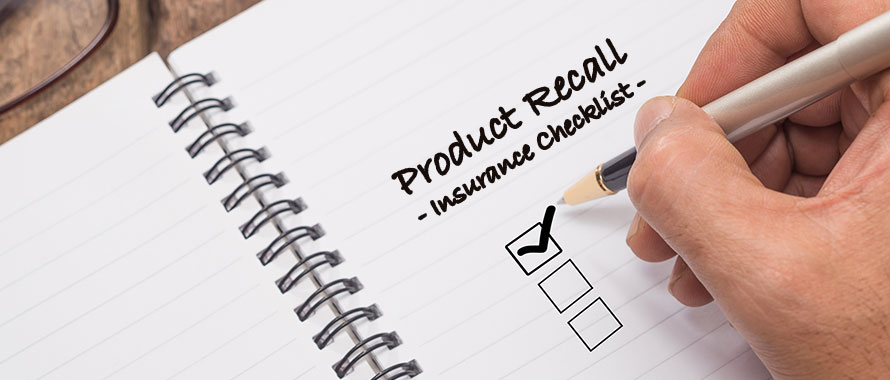Product recalls are rising. Annual food recalls have doubled since 2002 and vehicle recalls computed to more than three times the number of cars sold1. Outside of what is seen in the mainstream media, there are countless more product recall incidents occurring, especially in small and mid-size businesses. Any recall can be a costly undertaking—making Product Recall insurance crucial for businesses.
Insurance Market Source has developed a checklist for brokers, with the expert guidance of Marc Adler, Managing Director, Burns & Wilcox Brokerage, Scottsdale, Ariz., to ensure their clients are properly covered with Product Recall insurance.
□ Is the client educated on coverage?
The large majority of recalls – north of 80 percent according to Adler – are voluntary and not mandated by the government. The principal aspect is providing education to clients. Many business owners think that a recall cannot happen to them, and it is important to provide claims examples of companies similar to theirs for that reason. Product Recall insurance helps protect organizations from the major financial implications of a recall, including making the announcement, recalling the product, business interruption from downtime, lawsuits, and the like. Rebranding to gain back public confidence in your product can be trying, as it may be more difficult to reintroduce the product to the masses than to get product off the shelf.
□ Is the client’s quality control adequate?
When a product recall occurs, it is important to be able to determine the source of the error. For this reason, quality control should be at its highest level – especially with food producers. McCain Foods USA recently had an incident when fragments of golf balls were found in 2-pound bags of frozen hash browns, creating a potential choking hazard2. The recalls were made in eight states, and they were able to conduct the recall based on production code. In the underwriting protocol, quality control is vital. Batching allows the company and auditors to see the specific time and date a product was made and where.
□ Has the client had prior recalls?
If a potential client has past product recalls, it is paramount to see the incident reports to move forward with a Product Recall application. Insurers need to know that the client is financially sound and not cutting corners. Brokers should gain information from clients on corrective measures they have instituted to show they are not in jeopardy of additional occurrences due to the product recall issue. In addition, the carrier may have an audit review performed as a pre-underwriting requirement by a reputable consulting firm.
□ Does the client have a social media plan in place?
Social media plays an active role in regards to information gained on product recalls. Companies should have a proactive social media plan as part of their product recall strategy. If a client does not have a plan in place it is important to develop one with the aid of industry experts. When coverage is garnered many carriers offer consultants that will walk through proactive and reactive social media strategies with the client to help control the message.
□ Do you have a full understanding of what the client produces?
Food-related product recalls receive widespread attention, often overshadowing the non-food industry. Many recalls fall under the radar or are remediated before a large-scale recall needs to occur. Sometimes recalls are not related to production issues and can relate to proper documentation of production processes. For example, a meat processing facility had undergone a government regulatory inspection and concerns were raised over record keeping. If documentation was not provided, a recall would occur under several batches. An expert consultant was brought in to analyze the records and was able to provide the needed documentation to prevent the recall.
□ Has third-party consequential damage been discussed?
One item that brokers often do not discuss with clients is third-party consequential damage or business interruption. If they are a company that supplies a portion of an end product – such as fruit syrup that goes in a pastry or a car part for example, coverage is key. If this client has a product recall and is unable to supply their product to the end producer, they have the potential to shut down the end product production as well – raising the cost of the product recall. It may also be that a broker’s client is the end producer and needs to confirm their suppliers have additional coverage in place.
□ Is the application complete?
If there are no prior product recalls, a well-completed Product Recall application is a must. Emphasis should be focused on quality control protocols as the fundamental starting points.
The key is to look at each risk individually. Definitions of product recall in different policies may vary. Small ‘mom and pop’ facilities and large chain producers have an equal chance of risk. Brokers must remain diligent in educating clients on the importance of safeguarding against the potentially devastating financial impact of a product recall.
References




